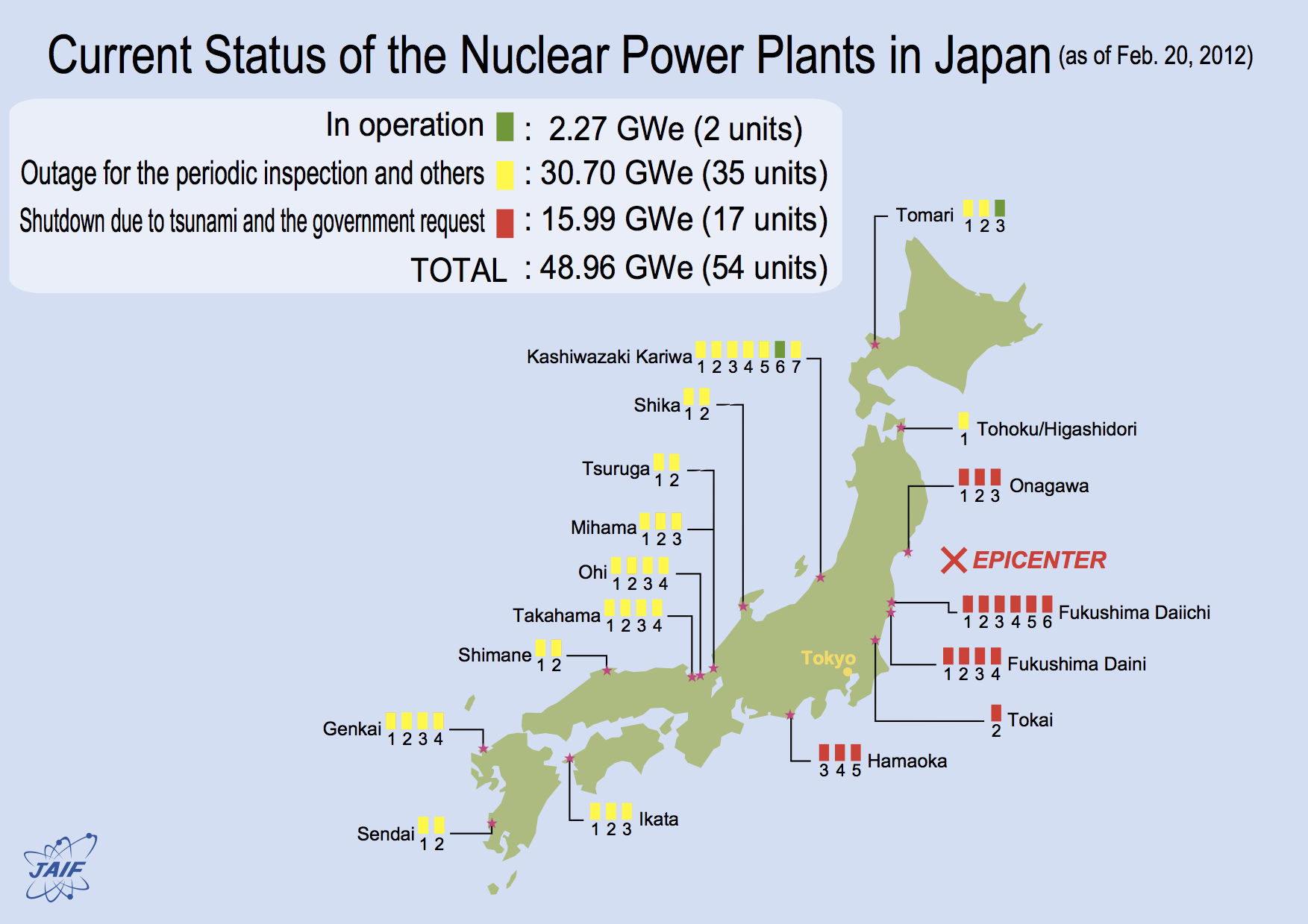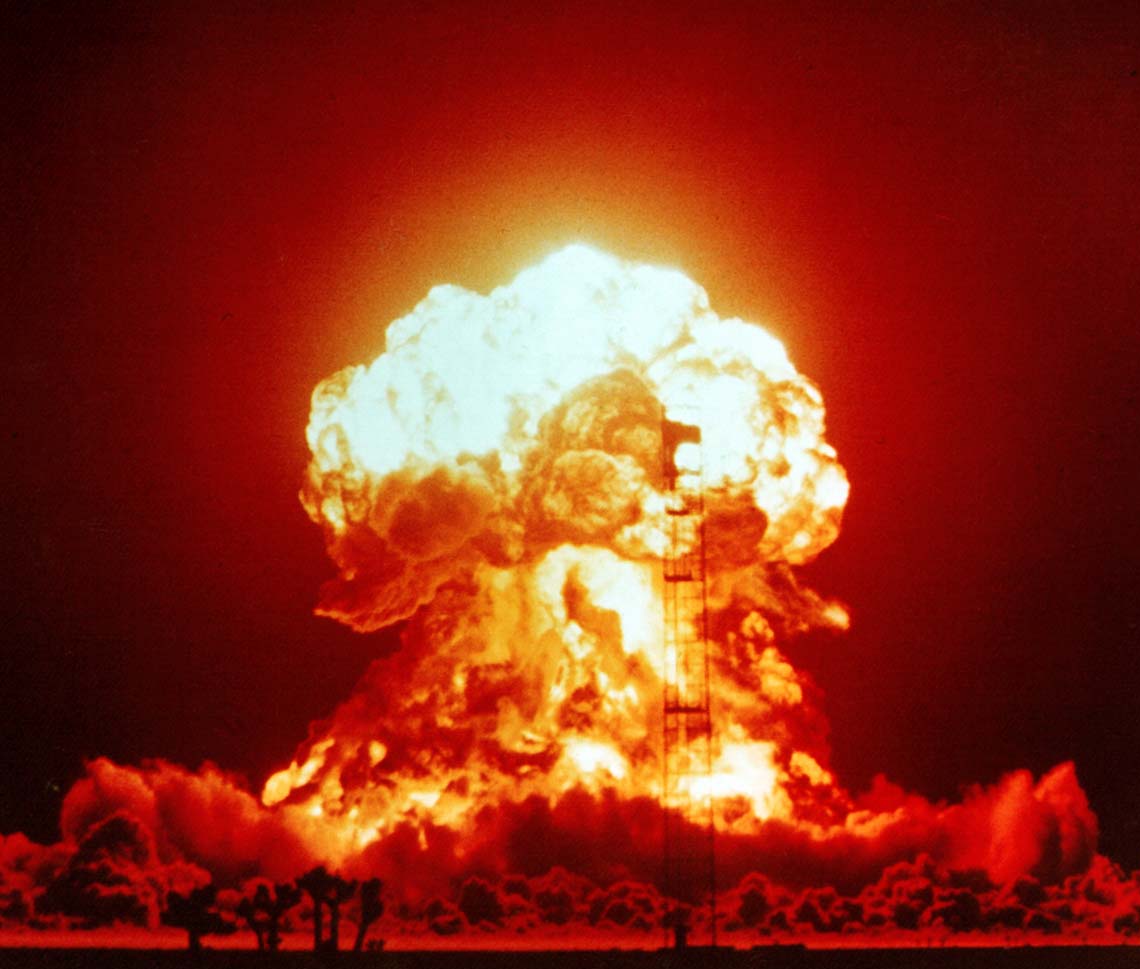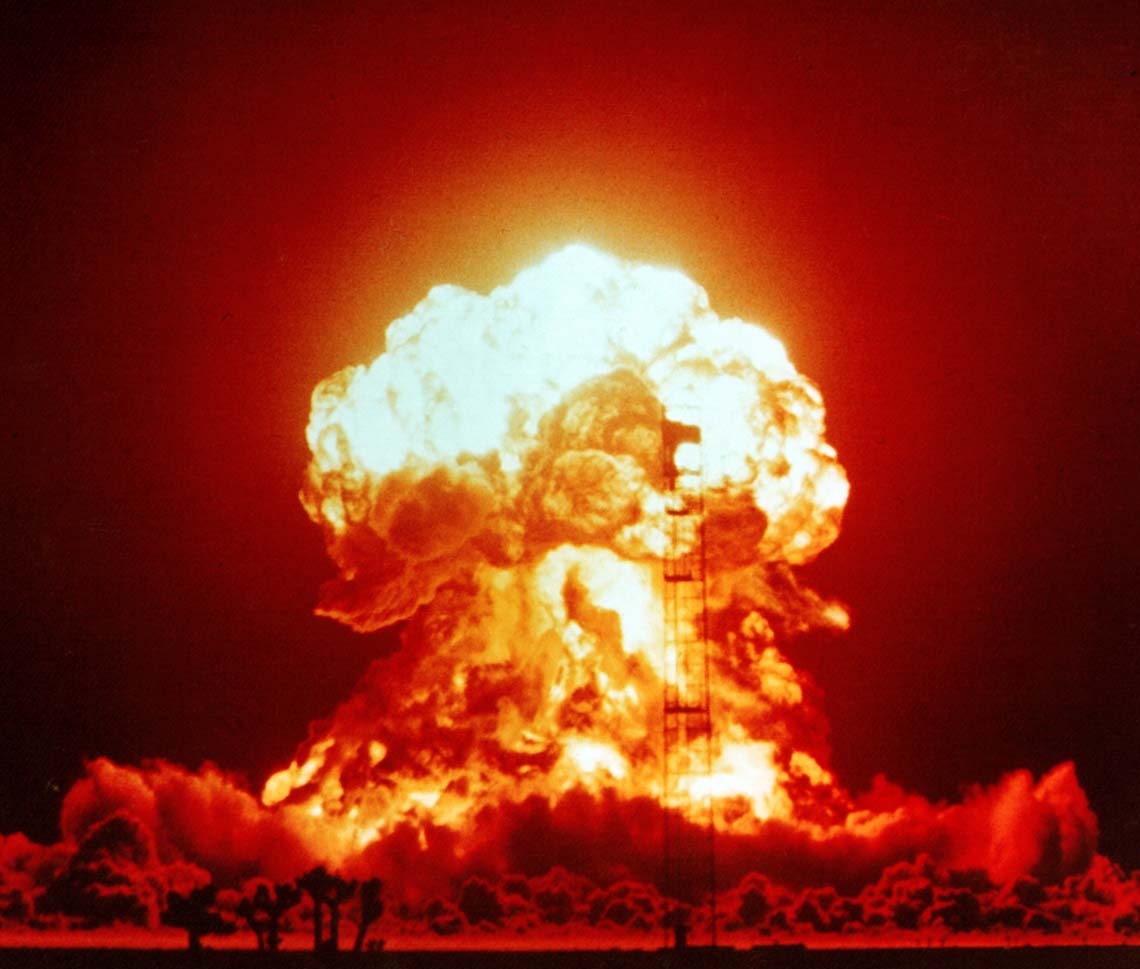
Blog
-
Geiger Readings for Sep 04, 2015
Ambient office = 119 nanosieverts per hourAmbient outside = 123 nanosieverts per hourSoil exposed to rain water = 89 nanosieverts per hourYellow bell pepper from Central Market = 167 nanosieverts per hourTap water = 112 nanosieverts per hourFiltered water = 94 nanosieverts per hour -
Nuclear Reactors 280 – Current Status of Japanese Nuclear Power Reactors
Japan turned off all forty eight of its nuclear reactors after the Fukushima disaster in March 2011. These reactors generated thirty percent of Japan’s power. Since then there have been investigations and studies to understand why the disaster happened and how to prevent such an event from happening in the future. All the existing nuclear power plants in Japan have been studied with respect to risk. The Abe government is still dedicated to making nuclear technology the centerpiece of Japan’s expansion of foreign trade. They also believe that nuclear power is the solution to Japan’s energy needs.
There are currently forty two operable nuclear reactors in Japan. Nine of these will probably never be turned back on due to their inability to meet the new safety standards. Even if the utilities that own reactors make modifications to meet the new standards, there is apparently no guarantee that they will be permitted to restart. There is confusion and conflict between the Japanese courts and regulatory agencies. Two reactors that had been clear for restart by the Japan Nuclear Authority have been blocked by courts from restarting. The first of these to be turned back on is at Sendai.
Here is the list of the reactors in Japan and notes on their potential return to commercial operations. (Source is the Nuclear Street website.)
“Sendai 1 is restarted; Sendai 2 is likely to receive NRA approval this year.
Ikata 3 in Shikoku: Likely to be approved by regulators. It is viewed as having local support for a restart.
Genkai 3 and 4 in Kyushu: Moving forward with applications for restart. Has some local support.
Tomari 1, 2 and 3 in Hokkaido: Moving forward with applications.
Shiame 2 in Chugoku: odds for restart uncertain; local government is investigating fuel documentation issues.
Takahama 3 and 4, Kansai: Restart viewed as uncertain; utility is appealing court injunction preventing restart.
Ohi 1 through 4, Kansai: Considerable uncertainty due to legal risks Has submitted application for restarts, but courts have interceded. Company appealing court’s directive.
Higashidori 1, Tohoku: Application for restart submitted, but the outcome is uncertain due to the proximity to a tectonic fault line.
Kashiwazaki 6 and 7, Tokyo: Odds for restart uncertain due to strong opposition in local government.
Onegawa 1 and 2, Tohoku: No application for restart on Unit 1, fate of Unit 2 unclear – it was damaged during the Great East Japan Earthquake of March 2011.
Tokai Daini, Japco: Approval for restart uncertain due to age of plant.
Takahama 1 and 2, Kansai: Also uncertain due to age of Unit 1 and strident regulatory response to Unit 2.
Hamaoka 3, 4 and 5, Chubu: Has applied for restart of Unit 3, but outcome is uncertain. Facility is close to a major tectonic fault line. Unit 5 suffered sever flooding of saltwater during March 2011 events.
Shika 2, Hokuriku: Hurdles for restart include local fault lines and local opposition.
Kashiwazaki 1 – 5, Tokyo: Unit 3 not approved for restart. Legal challenges beset restarts of other units. Unit 4 damaged by July 2007 earthquake event.
Mihama 3, Hokuriku: Close to decommissioning age.
Genkai 2, Kyushu: Upgrades viewed as too costly for restart attempt.
Ikata 1 and 2, Shikoku: Up against age limitations and cost issues.
Shika 1, Hokuriku: Has local opposition and sits close to a problematic fault line.
Tsuruga 3, Japco: Has local opposition and sits close to a problematic fault line.
Fukushima Plants – Daiichi and Daini, Tokyo: Very unlikely due to severe damage and very strong local opposition.”
Attempts to reform the Japanese nuclear industry have failed in the past. If major changes are not made to the way nuclear power is regulated in Japan, the odds of another major nuclear accident are great. If and when such an accident occurs, it will be much harder if not impossible to turn the Japanese nuclear power reactors back on after they are shut down.
-
Radiation News Roundup Sep 03, 2015
Kazakhstan and China have agreed to the procurement of temporary storage services of natural uranium concentrates in China and transit through China to the western ports of the USA and Canada. world-nuclear-news.org
Saudi Arabia and South Korea yesterday signed contracts to support their cooperation in developing SMART reactors. world-nuclear-news.org
-
Geiger Readings for Sep 03, 2015
Ambient office = 102 nanosieverts per hourAmbient outside = 85 nanosieverts per hourSoil exposed to rain water = 100 nanosieverts per hourCalifornia avacado from Central Market = 105 nanosieverts per hourTap water = 137 nanosieverts per hourFiltered water = 123 nanosieverts per hour -
Nuclear Weapons 155 – The Ongoing Threat of Nuclear Weapons – Part 2 of 2 parts
Part 2 of 2 Parts (Please read Part 1 first)
There is also the possibility of a non-state terrorist organization obtaining a nuclear device and using it against a state, nuclear or otherwise. It is possible that some nuclear warheads may have gone missing when the Soviet Union fell apart in 1991. There are nuclear states such as Pakistan and North Korea which have a history of shading dealings in nuclear materials and technologies which might sell a warhead to a terrorist group. The detonation of a single nuclear device by terrorists in a major city could cause the death of millions and destabilize the global economic and political system. There have been projections that a small nuclear device exploded fifty miles above the center of the U.S. could effectively destroy the U.S. with the resulting electromagnetic pulse which would fry the continental power grid. The collapse of the U.S. would lead to the collapse of the world economic system and the possible death of billions.
And, finally, with the aging of the nuclear arsenals of the U.S. and Russia as well as the acquisition of nuclear weapons by smaller and less stable countries, there is always the danger that a nuclear warhead will be detonated accidentally. Nuclear weapons systems are designed with technology and procedures to prevent this but no human build system is perfect. There have been close calls in the past where a nuclear weapon could have been accidentally set off.
There are a number of existential threats facing the human race including climate change, asteroid impacts, massive solar flares, plagues, collapse of major infrastructure, overpopulation leading to starvation, etc. While the threat of nuclear detonations in populated areas has decreased since the end of the Cold War, it is certainly not gone by any means. The U.S. and Russia are both upgrading their nuclear arsenals. Non-nuclear states are working to obtain nuclear weapons. There are international tensions that could boil over into military conflicts that could result in nuclear detonations. The fact that no one can win a nuclear war will not necessarily stop someone from starting one.
re is a global movement to get rid of all nuclear weapons. The human race has cringed under the nuclear threat for far too long. Pressure must be brought to bear on politicians who believe that the possession of nuclear weapons makes their nation more secure. If it was ever the case, it is certainly not the case now. We were fortunate indeed that nuclear war never broke out between the U.S. and Soviet Union but, with more and more nuclear nations and deteriorating global stability, our luck may run out.
There is a close connection between nuclear power and nuclear weapons. Nuclear power was originally pushed on the citizens of the U.S., the Soviet Union, China and other nuclear states with the promise that it would be cheap and safe. The real reason for peaceful nuclear power projects was to support the nuclear weapons programs. The same enrichment process that creates fuel for nuclear reactors can be used to enrich uranium for nuclear weapons. The nuclear waste produced by nuclear reactors can be processed to extract plutonium for nuclear weapons. It is now obvious, after decades of use, that nuclear power is neither cheap nor safe. It would be best if the human race, in addition to destroying all nuclear warhead, also shut down all nuclear power plants and shifted to other sources of low-carbon renewable energy.
-
Radiation News Roundup Sep 02, 2015
More Fukushima Deaths: ‘Leukemia-linked Disorder’ Killing Baby Seals Along California Coast. thedailysheeple.com
Obama secures Iran nuclear deal with Barbara Mikulski vote. cnn.com
The first safety concrete has been poured for the basemat of the containment building of the fourth reactor at the United Arab Emirates’ Barakah nuclear power plant, marking the official start of the unit’s construction. world-nuclear-news.org
The International Atomic Energy Agency, the United Nations’ nuclear power watchdog, said that Kenya had made the appropriate “consideration” regarding its infrastructure needs to move forward with development of a nuclear power program. nuclearstreet.com
-
Geiger Readings for Sep 02, 2015
Ambient office = 118 nanosieverts per hourAmbient outside = 58 nanosieverts per hourSoil exposed to rain water = 58 nanosieverts per hourMexican avacado from Central Market = 102 nanosieverts per hourTap water = 93 nanosieverts per hourFiltered water = 81 nanosieverts per hour -
Nuclear Weapons 154 – The Ongoing Threat of Nuclear Weapons – Part 1 of 2 parts
Part 1 of 2 Parts
I have often blogged about the threat of nuclear bombs. This is a fear that haunted my childhood and still troubles my thoughts. Seventy years ago, the U.S. dropped atomic bombs on Hiroshima and Nagasaki, Japan which led to the end of the World War II in the Pacific. Whether or not it was necessary has been argued since then. We have been very fortunate that brave and wise men have pulled us back from the brink several times since the bombing of Japan when the world was on the edge of nuclear annihilation. On several occasions, they disobeyed orders and training because they could not bring themselves to end human civilization. Today I am going to consider several possible future situations that could result in the detonation of one or more nuclear bombs.
Obviously, the most discussed possibility for nuclear war is an outbreak of conflict between the U.S. and Russia which inherited the Cold War nuclear arsenal of the defunct Soviet Union. Both countries possess over four thousand warheads and over fifteen hundred delivery vehicles including bombers, submarines and missiles. These weapons are operational and could be launched in a matter of minutes by either side. There has been a major reduction of warheads since the Cold War as a result of a series of treaties. While neither side thinks it can win a full scale nuclear war, there is a danger of an accident involving the early warning radar systems triggering an exchange of nuclear missiles. There is also a possibility that a regional war with conventional weapons could escalate into a full nuclear war as the U.S. was drawn into a conflict by treaty obligations.
The U.S. and Russia are not the only countries that possess nuclear weapons. There are also smaller nuclear powers that could engage in a nuclear war. India and Pakistan have a long history of conflict over border disputes and other issues that have led to several conventional wars since World War II. Both sides have more than a hundred nuclear warheads and delivery systems to attack each other. Since they are sitting next to each other, if either side attacked the other, the attacking side would soon experience fallout from its own weapons. The destabilization of the region and the horrendous humanitarian crisis would engulf both nations even if one side was the technical winner. However, there are fanatic nationalists on both sides who might be willing to start a nuclear exchange if they ever rose to power. Even a few hundred nuclear warheads could trigger a nuclear winter that could severely impact the entire world by triggering a nuclear winter.
There is the possibility of a nuclear state using nuclear weapons against a non-nuclear state. Russia has actually threatened to use tactical nuclear weapons against NATO in a regional conflict in Eastern Europe if it was losing to NATO’s conventional weapons and ground troops. This would invite retaliation with nuclear weapons from NATO and could cause severe damage in Eastern Europe even if it did not escalate into an exchange of intercontinental ballistic nuclear missiles between the U.S. and Russia. Israel has a nuclear arsenal which it could unleash if it was being overwhelmed by conventional weapons ground troops from surrounding hostile non-nuclear nations. This would likely cause massive destruction and loss of life in the Middle East and ultimately severely impact the entire world.
(Please read Part 2)
-
Radiation News Roundup Sep 01, 2015
A ceremony was held on 28 August to mark the official opening of South Korea’s underground low- and intermediate-level radioactive waste (LLW/ILW) disposal facility at Gyeongju in North Gyeongsang province. world-nuclear-news.org
UN’s International Atomic Energy Agency (IAEA) has decided to help African nations with the development of nuclear energy for electricity generation. africanreview.com
-
Geiger Readings for Sep 01, 2015
Ambient office = 101 nanosieverts per hourAmbient outside = 87 nanosieverts per hourSoil exposed to rain water = 89 nanosieverts per hourCrimini mushroom from Central Market = 88 nanosieverts per hourTap water = 52 nanosieverts per hourFiltered water = 47 nanosieverts per hour






